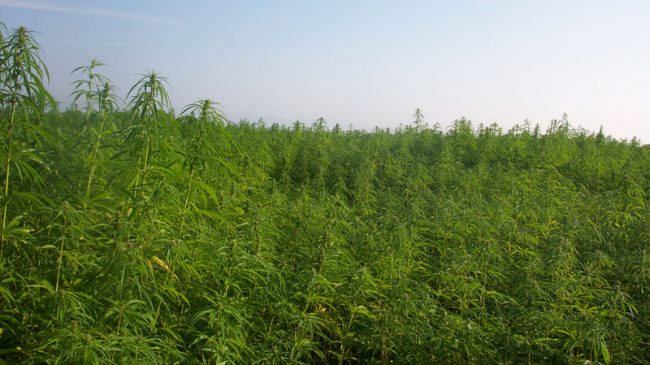If not for a curious veto by Gov. Arnold Schwarzenegger last year, California farmers would be tending to their first, very useful and profitable crop of industrial hemp right now. Instead, legislators in Sacramento are back for the second year in a row, working on a law to allow industrial hemp cultivation in the state.
Last year, the California Industrial Hemp Farming Act, which would permit and regulate the cultivation of hemp in the state for the first time in more than a half-century, sponsored by Assembly members Chuck DeVore (R- Irvine) and Mark Leno (D-San Francisco), was vetoed by Schwarzenegger. The two assemblymen have re-introduced the act this year with the notable help of fiscally conservative Senator Tom McClintock (R-Thousand Oaks).
The sizeable economic opportunity for domestic industrial hemp products explains the tenacity of lawmakers and industrial hemp advocates seeking a second chance for the law. The long, strong fibers of the hemp plant require less energy to manufacture than many petroleum-based plastics used in comparable industrial applications today. Carmakers like Ford and BMW report that replacing heavy fiberglass and epoxy automotive components with durable, lighter-weight hemp-based fiberboard cost-and pollute-less. Savings are realized both in the production stage and through better gas mileage for the life of the vehicle. Altogether, millions of cars are already on the road today with hemp components, and the industry says they’d likely use more hemp if it was available domestically.
The California Energy Commission even lists hemp as a possible biomass energy crop; a source of fuel that will be needed to meet the ambitious emissions reductions goals set by the governor.
Hemp can also produce textiles similar to cotton, an important agricultural commodity in California, worth $630 million in 2005. On a per-acre basis, however, hemp would likely produce more fiber, using half the irrigation water and half the nitrogen fertilizer, in half the time that it takes to grow even genetically-engineered herbicide tolerant (“Roundup Ready”) cotton varieties in California.
Substituting hemp for cotton would also result in substantially fewer herbicides, pesticides and other agricultural chemicals being used in the San Joaquin, Sacramento and Imperial valleys.
According to the Hemp Industries Association, more than 75 percent of the sales of legal hemp products are already made by California-based businesses, many in the popular hemp foods and cosmetics industries. But California companies must import the raw materials for their products from Canada or other places where hemp growing is allowed, at an added expense of hundreds of thousands of dollars annually.
For politicians the hang-up seems to be that some believe the relationship between industrial hemp and marijuana is too close for comfort. In the message explaining his veto last September, Gov. Schwarzenegger stated that he would not support a law perceived to conflict with federal statutes, and that, “California law enforcement has expressed concerns that implementation of this measure could place a drain on their resources and cause significant problems with drug enforcement activities.”
With worries about terrorism, school shootings, and escalating gang violence, you’d think California law enforcement would have better things to do than complain about growing hemp, based on the unfounded and archaic linkage between this promising industrial crop and marijuana as it is grown and consumed today. Law enforcement authorities should understand that a field of industrial hemp is the last place anyone would try to grow marijuana. They have an ally in California hemp farmers, who will be required to take extra precautions to keep illegal marijuana growers from trespassing and damaging hemp fields. And from the marijuana grower’s perspective, cross-pollination with a hemp crop in close proximity would ruin their product-not unlike crossing two purebred dogs of different breeds. The two plants are the same species, but industrial hemp contains insignificant amounts of the active ingredient, tetrahydrocannabinol (or THC), that is valued in marijuana.
Further, hemp grown for fiber is planted in dense stands of tall, thin plants, similar to bamboo in appearance-easily distinguished from the bushy, flower-laden drug varieties. As an added precaution, the California Industrial Hemp Farming Act would require that farmers test their crops before harvest and only use seed from stock containing three-tenths of one percent THC or less.
The fear that marijuana could be “hidden” in industrial hemp crops is unfounded. When harvest season comes around this year, hopefully Schwarzenegger won’t have trouble identifying the California Industrial Hemp Farming Act for what it really is: a serious opportunity to make economic and environmental gains for all of California.
